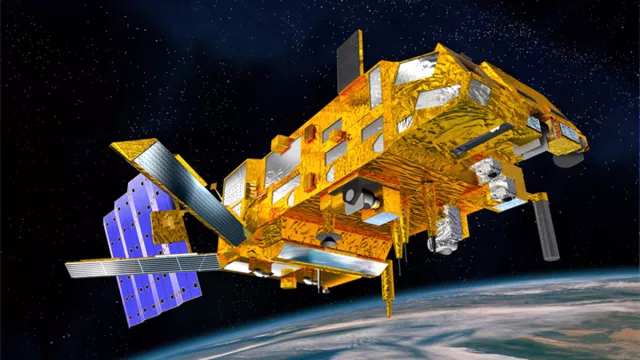Developed by CNES in partnership with Eumetsat, the IASI instrument (Infrared Atmospheric Sounding Interferometer) is flying on the European MetOp series of weather satellites. Besides acquiring temperature and humidity data, IASI also measures more than 30 other atmospheric components with high precision and is supporting the efforts of scientists monitoring Earth’s climate.
Key information
| Mission | Analyse atmosphere (temperature, humidity, composition, climate variables) |
|---|---|
| Domain | Earth observation |
| Launch date | 19 October 2006 |
| Partners | Eumetsat, CNRS, IPSL, Meteo France, Ecole Polytechnique, Sorbonne University, LMD, LATMOS, CNRM, LOA, LISA, UK Met Office, ESA, |
| Where | On MetOp-A, MetOp-B and MetOp-C satellites |
| Lifetime | Initially 3 x 5 years, still operational after more than 18 years |
| Status | In operation (on MetOp-B and MetOp-C / MetOp-A deorbited) |
Key figures
- 3.7 to 15.5 µm: wavelength range
- 8,461 light spectrum channels
- 1°C: temperature measurement precision in layer 1 km thick
- 10%: humidity measurement precision in layer 1 km thick
Key milestones
- November 2021: MetOp-A deorbited at end of life
- 15 October 2021: End of IASI_FM2 operational phase (IASI-A)
- 1 July 2019: IASI_FM3 transitions to operational phase (IASI-C)
- 7 November 2018: MetOp-C satellite launched with IASI (FM3) by Soyuz ST Fregat
- 20 April 2013: IASI_PFM-R transitions to operational phase (IASI-B)
- 17 September 2012: MetOp-B satellite launched with IASI (PFM-R/IASI-B) by Soyuz ST Fregat
- 18 July 2007: IASI_FM2 transitions to operational phase (IASI-A)
- 19 October 2006: MetOp-A satellite launched with IASI (FM2- IASI-A) by Soyuz ST Fregat
- March 2001: First flight in stratospheric gondola
- 15-17 March 2000: IASI project kicks off
Project in brief
The IASI interferometer measures atmospheric temperature and humidity with extreme precision, detects trace gases like ozone, methane and carbon monoxide, and monitors a range of other variables—clouds, aerosols and greenhouse gases—vital to climate research.
IASI instruments are currently flying on the European MetOp-A and MetOp-C weather satellites, launched in 2012 and 2018 by the European Space Agency (ESA) and Eumetsat (EUropean organisation for the exploitation of METeorological SATellites).
MetOp-A, carrying IASI-A, was launched in 2006 and was part of the MetOp constellation until it was deorbited in November 2021 after 15 years in operational service.
The programme will be continued with the IASI-NG new-generation instrument, now in phase D at CNES, which will fly on the MetOp-SG weather satellites.
CNES’s role
Built by Thales Alenia Space with technical oversight from CNES, IASI comprises two main elements: a spectrometer designed to resolve atmospheric infrared radiation into line spectra, and an imager to locate points to be sounded.
The instrument also features in-built data processing software developed by CNES.
A technical expertise centre at CNES’s Toulouse Space Centre is tasked with monitoring the IASI system’s performance and handling any anomalies.
Data are processed on the ground by Eumetsat. CNES teams are responsible for quality and processing of Level 1 data
A broad scientific community is exploiting data from the IASI mission, with France playing a pre-eminent role.
Contacts
Project Leader
Olivier Vandermarcq
E-mail: olivier.vandermarcq at cnes.fr
France
Project Leader
Mathilde Faillot
E-mail: mathilde.faillot at cnes.fr
Atmospheric Physics & Meteorology subject matter expert
Adrien Deschamps
E-mail: adrien.deschamps at cnes.fr
Atmospheric Composition & Carbon Cycle subject matter expert
Carole Deniel
E-mail: carole.deniel at cnes.fr


